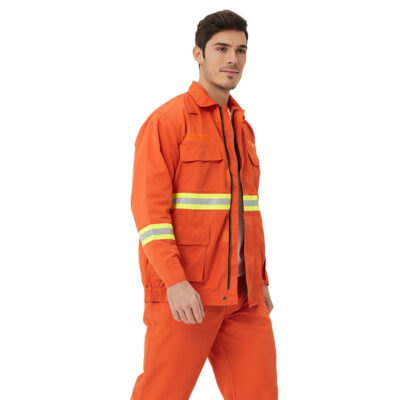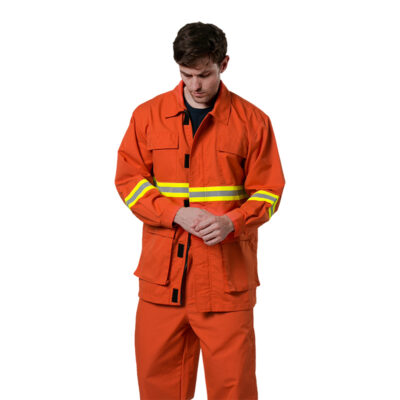FR Clothing Care and Laundering: Extending Protective Lifespan
Introduction: Why FR Clothing Maintenance Matters
Flame-resistant (FR) clothing is a critical investment for industrial safety. It protects workers in sectors such as oil & gas, construction, utilities, and manufacturing from thermal hazards. But even the best FR garments lose effectiveness if they are not properly maintained.
For procurement managers and safety officers, understanding the right laundering and care protocols is essential to extend garment life, ensure compliance, and protect workers in the long run.
👔 What Makes FR Clothing Different?
Unlike standard workwear, FR garments are engineered to self-extinguish when exposed to flame, minimizing burn injuries. Depending on the material, the FR protection can be either:
-
🔥 Inherent FR fibers → Flame resistance is part of the fiber itself (e.g., aramid).
-
🧵 Treated fabrics → Flame-retardant chemicals are applied to cotton or blends.
Because these garments are designed for life-saving performance, care instructions must be strictly followed.
🧼 Common Laundering Mistakes to Avoid
Improper washing and drying can severely damage the FR properties. Buyers and distributors should educate both laundry providers and employees to prevent:
-
❌ Bleach or peroxide use – these chemicals weaken FR treatments.
-
❌ High heat drying – excessive temperatures break down fibers.
-
❌ Fabric softeners or starch – they leave residues that reduce flame resistance.
-
❌ Mixing with non-FR clothing – contamination with flammable lint or chemicals can compromise safety.
Training staff on these points ensures that investments in FR clothing remain effective.
🧾 Best Practices for Laundering FR Clothing
To maximize the protective lifespan, industrial buyers should recommend the following care practices:
-
🌊 Use mild detergents: Non-ionic or phosphate-free detergents preserve FR properties.
-
🌬️ Tumble dry low or line dry: Helps retain fabric integrity.
-
🧽 Industrial laundering: For high-volume users, professional services with FR-compliant processes are preferred.
-
🔍 Inspect after wash cycles: Look for thinning, holes, or seam failures.
By standardizing these processes across the workforce, companies can extend garment life cycles and reduce replacement costs.
📊 Lifecycle Management and ROI
FR clothing is an investment. Replacing garments too early increases costs, while extending their lifespan through proper care boosts ROI. Procurement managers should adopt a garment lifecycle management approach, which includes:
-
🧑🤝🧑 Employee training on garment care.
-
📅 Scheduled inspections to identify wear and tear.
-
🔁 Replacement planning based on industry risk assessments.
This strategy ensures that workers stay protected while budgets remain under control.
🌐 Partnering with the Right Manufacturers
Care and laundering can extend lifespan, but it all starts with quality garments. Choosing a trusted Workwear Manufacturers ensures consistent fabric performance and bulk supply reliability.
For industries requiring certified protection, working with specialized FR Clothing Manufacturers guarantees access to garments designed to meet strict safety standards, with documentation for compliance audits.
🔑 Conclusion: Care Equals Protection
FR clothing only works if it is properly cared for. For procurement and safety teams, the responsibility goes beyond purchasing—it extends to educating employees, setting laundering protocols, and working with certified suppliers.
🔎 With the right care practices in place, companies can ensure that their FR uniforms deliver maximum safety, durability, and ROI.





















